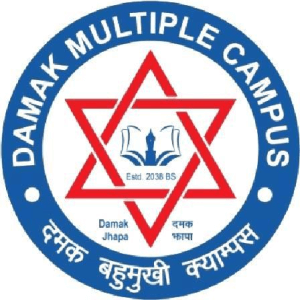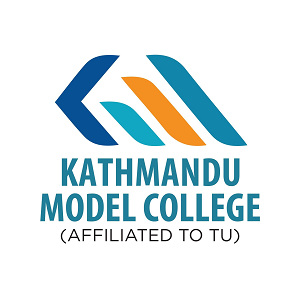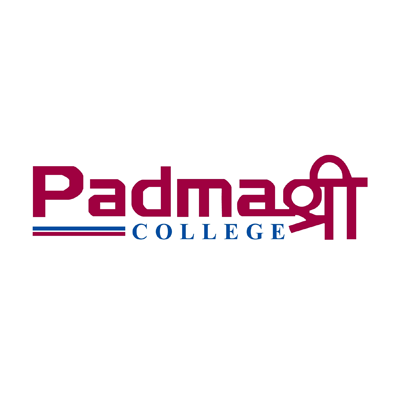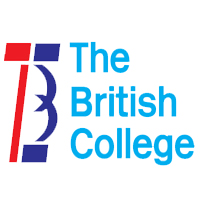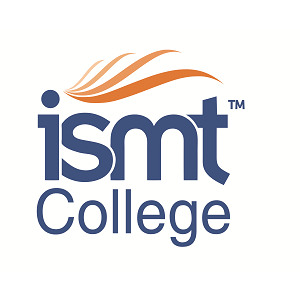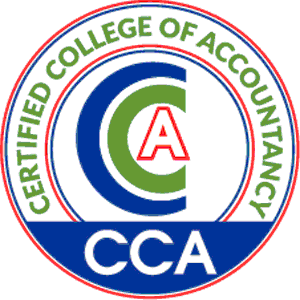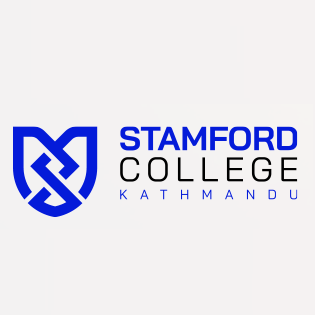Overview
Shanishchare Multiple Campus was established in 2064 BS (2007 AD) and is a community-owned campus located in Arjundhara Municipality-7, Jhapa, at Shanischare Bazar, Jhapa, Koshi Pradesh, Nepal. It is affiliated with Tribhuvan University and approved by the University Grants Commission of Nepal.
It offers four years’ full-time bachelor's degree programs in Bachelor of Business Studies (BBS) and Bachelor of Education (B.Ed.).

Historical Background
Centres of knowledge in ancient Nepal included Devkul (for religious rites), Rajkul (for political matters), Pitrikul (for ancestral traditions), and Gurukul (for caste-based teachings). These traditional centers later evolved into formal institutions such as schools, colleges, and universities. The first formal school in Nepal was Durbar School (est. 1910 BS), followed by Bichandra College (1932 BS) and Tribhuvan University (2016 BS).
Toward the end of the Rana regime, supporters of democracy initiated movements across the country, including in eastern Nepal. In Jhapa, this democratic wave began influencing local communities. Amidst political limitations, promoting education emerged as a reliable way to build public trust.
Two progressive Rana Prime Ministers—Dev Shumsher and Padma Shumsher—believed education should be accessible to the public. Padma Shumsher’s push to educate the masses enabled the opening of schools even in eastern Nepal, mainly as language schools.
Owing to proximity with Darjeeling, residents from Tehrathum, Taplejung, Panchthar, and Ilam frequently traveled there for trade and became exposed to English education. Inspired by this, some began sending their children to study in Darjeeling or Banaras. As a result, local community leaders and returned learners started founding schools in their own villages.
Early Developments in Jhapa
Around 1946 BS, Captain Kashinath Bastola purchased 64 bighas of land near Sanishchare Bazaar from landowner Dukhiya Rajbanshi. This area became known as "Captainwadi," marking the origin of Sanishchare Bazaar. His grandson, Nagendranath Bastola, spearheaded the establishment of 44 schools in Ilam and Jhapa before the founding of Kanti School.
Prominent figures in Jhapa’s democratic education movement included Nagendranath Bastola, Dharmaprasad Dhakal, Bhairav Prasad Acharya, Deviprasad Upreti, Bishnu Prasad Mishra, Bishnu Bhakta Dhakal, Man Bahadur Ranjitkar, and others.
In 2005 BS, with participation from educators like Raghubir Budhathoki and Ran Bahadur Budhathoki, the second school in Jhapa—Sansare Pathshala—was established at Sanishchare Bazaar. Congress party secretary Shiv Prasad Dahal was appointed headmaster. This school became Sansare Middle School by 2009 BS and was upgraded to Sanishchare High School in 2018 BS.
Later, to meet the requirement of graduate-level teachers, the school expanded. Laxmi College was launched as a night college in 2025/26 BS but later closed due to lack of accreditation. However, in 2056 BS, Grade 11 and 12 classes began, marking a 51-year journey from primary to higher secondary level and laying the foundation for the Shanishchare Multiple Campus.
Founding of the Campus
Located in Arjundhara Municipality, Jhapa, the campus lies at 26.41°N and 87.59°E, near the sacred Pashupatinath Jaleshwor Dham. Around 2063–2064 BS, discussions emerged among morning-shift secondary school teachers about launching bachelor-level programs. At the time, the school's chairperson was Mr. Saroj Kumar Oli, and the principal was Mr. Lakshmeshwar Pandey—both supportive of the initiative.
Together with former students of Sanishchare Secondary School, including the author, they concluded that a former students' gathering would be the best medium to launch the campus. In the first such meeting, chaired by Mr. Uddhav Thapa, the need for a campus was unanimously agreed upon.
Subsequently, a 15-member ad hoc committee was formed under the leadership of the school’s management to initiate affiliation processes with Tribhuvan University and secure necessary support. After fulfilling required documentation and deposits, Tribhuvan University granted affiliation for Education and Management faculties on Ashwin 16, 2064 BS, with specific conditions—including relocating the campus outside the school premises within three years. This condition took ten years to meet.
Infrastructure and Relocation
With growing student numbers and community support, a plot of one bigha, one kattha, and 9.5 dhur was purchased in 2066 BS. Financial support came from:
-
Local community donations
-
University Grants Commission
-
Municipality (including targeted groups)
-
MP Development Fund
-
Other contributors
This funding supported the construction of eight concrete classrooms, four semi-permanent rooms, and two toilets. In 2074 BS, the campus was finally relocated to its own building, ten years after its founding.
Present Status
Following relocation, rapid improvements occurred in physical infrastructure, academic operations, and management. As student numbers rose, financial stability improved. Facilities now include:
-
Office rooms, library, accounts room
-
Separate toilets for staff, boys, and girls
-
Perimeter fencing on one-fourth of the compound
-
Motorbike parking
-
Laptop, desktops, projectors, CCTV, internet, and software access
-
Desks, podiums, whiteboards, lockers, chairs, and tables
-
A library with books and reference materials
-
Indoor and outdoor sports arrangements
The campus has already submitted its self-assessment report for QAA certification to the University Grants Commission. Endorsement from the QAA Division is pending.
Importantly, the campus continues to provide affordable and accessible education, particularly benefiting underprivileged students in Eastern Nepal. Through steady development and committed community involvement, Shanishchare Multiple Campus stands today as a recognized institution offering quality higher education.
Programs of the Campus
Shanishchare Multiple Campus runs two bachelor's level programs under Tribhuvan University:
-
Bachelor of Business Studies (BBS) under the Faculty of Management
-
Bachelor of Education (B.Ed.) under the Faculty of Education
Currently, the four-year bachelor's programs are conducted in both English and Nepali mediums. In the Education stream, major subjects include English, Nepali, and Economics, while Population Education is offered as a minor.
A study of student enrollment trends and dropout rates reveals a growing need to introduce new programs, particularly those related to technology and vocational skills. Utilizing the existing physical infrastructure to introduce such subjects can increase student enrollment and strengthen the long-term sustainability of the campus, based on its service area and size.
Current Bachelor-Level Programs Offered
-
Faculty: Management
-
Program: BBS (Four-Year)
-
Specializations: Accounting, Finance, Marketing, Statistics
-
-
Faculty: Education
-
Program: B.Ed. (Four-Year)
-
Major Subjects: English Education, Nepali Education, Economics Education
-
Minor Subject: Population Education
-
Educational Pedagogy
Following Tribhuvan University’s approval in 2064 BS, Shanishchare Multiple Campus began offering programs under the Management and Education faculties.
-
The B.Ed. program includes specialized courses in English, Economics, and Nepali, with Population Education as a supporting subject.
-
The BBS program offers specializations in Accounting, Marketing, Statistics, and Finance, available in both English and Nepali mediums.
To modernize teaching, ICT labs and laptops have been introduced, along with projector-based instructional setups.
Research and Teaching Strategy
Based on the strategic five-year plan initiated last academic session, the campus is now emphasizing research-integrated teaching. Faculty members are encouraged to prepare at least one research-based paper related to their subject and local context.
Practice teaching and other experiential sessions are conducted in line with the university's official guidelines, which are supplemented by internal operational manuals developed by the campus.
Foundations of Academic Infrastructure Development
The campus has identified the following focus areas for infrastructure development:
-
Development and management of structured, unstructured, and technological resources to support teaching and learning
-
Operation and management of practical, skill-oriented learning activities
-
Availability and management of textbooks and reference materials
-
Establishment and enforcement of governance practices aimed at improving academic quality
The campus aims to offer high-quality education by adopting student-centered, research-oriented, and technology-enhanced teaching methods.
Current Teaching Methods Include:
-
Lecture method
-
Question–answer sessions
-
Project work
-
Term paper writing
-
Research assignments
-
Group discussions
-
Audio-visual learning
-
Educational observation
-
Internal assessments
-
Guest lectures
-
Practical activities
Commitment to Educational Governance
Good governance is essential for meaningful educational development. To ensure productive outcomes from academic investments and to enhance both physical and social infrastructure, the campus adheres to legally established guidelines and administrative frameworks.
Efforts are made to maintain impartiality, regular classroom delivery, and professional integrity across academic operations. Through these structures, Shanishchare Multiple Campus works to strengthen educational governance and improve learning outcomes for its students.
Land and Infrastructure Development
As per Tribhuvan University's policy requiring a separate compound and dedicated building for campus operation, the then-management committee led a collective effort to secure land. With active participation from education supporters, social workers, and parents of the region, a plot measuring 1 bigha, 1 kattha, and 9.5 dhur (7,272.11 sq. meters) was purchased in 2066 BS.
Currently, 107 meters of the compound is enclosed by a permanent boundary wall, while 229 meters still remain to be fenced. After years of persistent efforts, the minimum number of classrooms required was constructed with funds collected from traditional religious recitations, donations from kind donors, grants from the University Grants Commission, allocations from the municipality (including targeted groups), and contributions from the Parliamentary Constituency Development Fund.
As a result, eight permanent rooms, four semi-permanent rooms, and two toilets were constructed. In 2074 BS (Shrawan), exactly ten years after its founding, the campus was successfully relocated from Sanishchare Secondary School to its own premises.
Infrastructure Development
Number of Buildings and Room Utilization
To date, the campus has completed the construction of three buildings:
-
The first academic building includes 21 rooms, including those in the corridor.
-
The second administrative building has 3 rooms.
-
The third academic building contains 4 rooms.
In total, there are 22 permanent rooms across the three buildings. Additionally, 5 temporary corridor-based rooms are currently in use, making a total of 27 rooms.
In fiscal year 2078/2079 BS, a grant of NPR 7.5 million from the University Grants Commission was allocated to construct a two-storey hall with 3 additional rooms. The tender has already been announced, and construction has started in the current fiscal year.
Classrooms Used for Teaching
The campus currently runs four-year programs under two faculties—BBS and B.Ed.
-
For the BBS program, 8 classrooms are used to run classes in both English and Nepali mediums.
-
For the B.Ed. program, 10 classrooms are used, including those for major and minor subjects.
In total, 18 classrooms are in regular use for academic purposes.
Rooms Used for Administrative and Academic Purposes
The following rooms are being utilized for administrative and academic support:
-
1 common room for faculty/staff
-
1 room for the Free Student Union (FSU)
-
1 library room
-
1 departmental room
-
1 meeting room
-
3 rooms for the Campus Chief, Assistant Campus Chief, and Accounts Section
Library and Book Acquisition
The campus has a dedicated library room with a separate reading section that accommodates up to 20 students at a time. The library houses:
-
1,916 textbooks
-
11 journals
-
365 reference materials
These resources are available for both teachers and students for academic support.
Transportation Services
To facilitate student commuting, the campus operates a total of three buses:
-
One bus donated by the Indian Embassy
-
Two buses rented by the campus
These services are primarily used by students from Jhukekhadi, Sadhutar, Hoxe, and Birtamod areas.
Basketball Court Infrastructure
To prepare the basketball court, a 100-foot long and 70-foot wide base has been constructed with a 2.5-foot high, 8-inch thick platform. Over 300 cubic feet of mixed material, including gravel, soil, bricks, and crushed stones, was compacted using a JCB, water tanker, grader, and roller.
The base construction was supported by the University Grants Commission (UGC). Final pitch work is still pending.
Table Tennis Court
A 20 ft × 15 ft indoor space has been developed as a table tennis court. All required materials have been arranged, including:
-
Table tennis board
-
Balls
-
Bats
-
Net
The court is now functional for student recreation and physical activity.
QAA Certification Status
The campus has completed and submitted its self-assessment report required for QAA certification. The evaluation process is currently underway.
Scholarships for Students
In the academic session 2079/80, a total of 83 students received scholarships amounting to NPR 259,000. This financial assistance has helped many students continue their studies effectively.
Campus Publications
The campus regularly publishes informative and academic materials. In 2079 BS, it released "Shaniprabha – 2079", the official annual publication. It includes updates on physical development, academic progress, financial records, administrative activities, and research articles.
Endowment Fund (Akshaya Kosh)
Through generous contributions, an endowment fund of NPR 618,000 has been established. The principal amount is non-expendable, and only the interest earned will be used to support campus development.
Educational Materials and Teaching Equipment
Classroom Infrastructure
-
Well-ventilated, well-lit rooms with complete electrification
-
Seating arrangements with desks and benches for each student
-
Whiteboards, podiums, and lecture tables in all classrooms
Educational Technology
-
A separate hall equipped with laptops and projectors for digital instruction
-
Two desktop computers provided to academic departments
-
Administrative offices equipped with 3 laptops and 5 desktops
-
2 photocopier-printers available
-
Internet and CCTV installed
Work is in progress to establish a fully functional ICT lab with internet access for students in the near future.
Library Setup (Block No. 3, Academic Building)
The library is located on the upper floor of Block No. 3 (Academic Building). It currently holds a total of 2,295 books, including textbooks, reference materials, and journals.
Facilities include:
-
Book racks and drawers
-
Desktops for office and library management
-
Internet and CCTV for security
-
Round tables and chairs for students to sit and read
The campus aims to continue expanding its book collection and upgrade library management for better academic support.
Inclusive Educational Access
Shanishchare Multiple Campus has provided affordable and accessible higher education opportunities to children from economically, socially, and intellectually marginalized communities within its service area. Despite challenges in educational investment, the campus has ensured equal access to education for financially disadvantaged groups.
Campus Involvement in Social Activities
From its establishment, the campus has maintained a strong relationship with the local community and has actively participated in community-based programs. Notably, it has been involved as a volunteer institution in various religious events such as the annual Purana, Balachaturdashi, and other spiritual gatherings held at the Arjundhara Jaleshwar Dham, also known as the "Pashupatinath of the East."
In addition, the campus has carried out various targeted programs to ensure children from backward communities are not deprived of higher education opportunities.
Key Initiatives Include:
-
Formation of Youth Red Cross Circle: This group was formed to promote student self-reliance and support in emergencies. It also contributes to community cleanliness and organizes blood donation and other social programs.
-
Student Union and Enrollment Campaign: Each year, during admissions, the campus visits households in its service area to inform them about its programs and build close relationships with the community. The student union plays an active role in this campaign.
-
Parent Gatherings: Parents are invited during campus establishment day and annual general assemblies to inform them of their responsibilities and the campus's contributions.
-
Community Use of Buildings and Halls: The campus hall is made available for local clubs and organizations to conduct programs, meetings, and educational events.
-
Transportation Services: The campus runs rental buses on Khudunabari and Sadhutar routes, while a campus-owned bus operates on the Hokse route. The campus covers 50% of transport costs through internal resources.
Enrollment and Fee Concessions
-
Married Daughters-in-Law Discount: A 10% discount on monthly tuition is offered to married daughters-in-law seeking admission.
-
Scholarships: In the previous academic year, 25% to 100% tuition waivers were provided to eligible students.
-
Incentive Awards: Each year, top scorers in the four-year bachelor's program receive cash awards and recognition for academic excellence.
Society Contributions for the Campus
Located in Arjundhara Municipality, Shanishchare Multiple Campus is the only community-based campus in the region. From its inception, the community has played a vital role in its economic, social, and physical development.
Stakeholders include:
-
Donors and patrons
-
Representatives from local NGOs and community schools
-
Alumni networks and local education enthusiasts
These members actively participate in policy-making, resource mobilization, and infrastructure development. Endowment donors and elected representatives, financial institutions, local clubs, and concerned bodies also provide timely guidance, financial aid, and material support.
Current Committees and Subcommittees
To increase community participation and ensure campus sustainability, various committees and subcommittees have been formed. These support:
-
Budget management
-
Structural and non-structural development
-
Policy formulation
-
Supervision and evaluation
Program for Campus Contributions to Society
Since establishment, the community has played an integral role—from raising the initial deposit for university affiliation to purchasing land and supporting ongoing development.
Based on this support, the campus has developed:
-
A 5-year strategic plan (2078–2082 BS)
-
A 15-year master plan (2080–2094 BS)
Planned programs in coordination with local institutions include:
-
Drug and substance abuse awareness campaigns
-
Self-defense training for girls
-
Blood donation drives
-
Eye health camps
-
Inter-campus competitions
-
Student volunteer participation in community events
-
Contests involving Grade 11 and 12 schools
-
Participation in local institutional programs
Program to Increase Community Involvement in the Campus
Recognizing the vital role the community has played in the campus’s educational, physical, and financial growth, efforts are ongoing to strengthen that involvement.
Planned Initiatives:
-
Organize annual Campus Establishment Day with community stakeholders
-
Hold an annual General Assembly
-
Share annual progress reports with the community
-
Provide transport services to areas with student populations
-
Conduct awareness programs in coordination with local organizations
-
Involve local stakeholders during campus planning
-
Include underprivileged, talented, and marginalized students in scholarship programs
These efforts aim to foster a strong sense of ownership and collective progress between the campus and its surrounding community.
Contact Shanischare Multiple Campus's administrative office for detailed information on the course, admissions, location, fees, scholarships, facilities, counseling or eligibility.


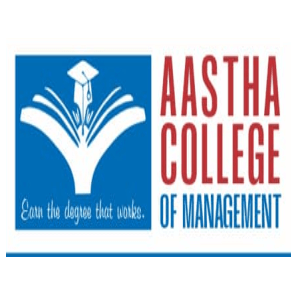
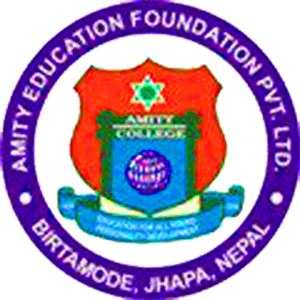
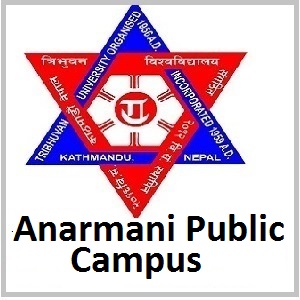
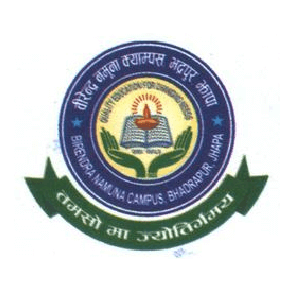
.png)
